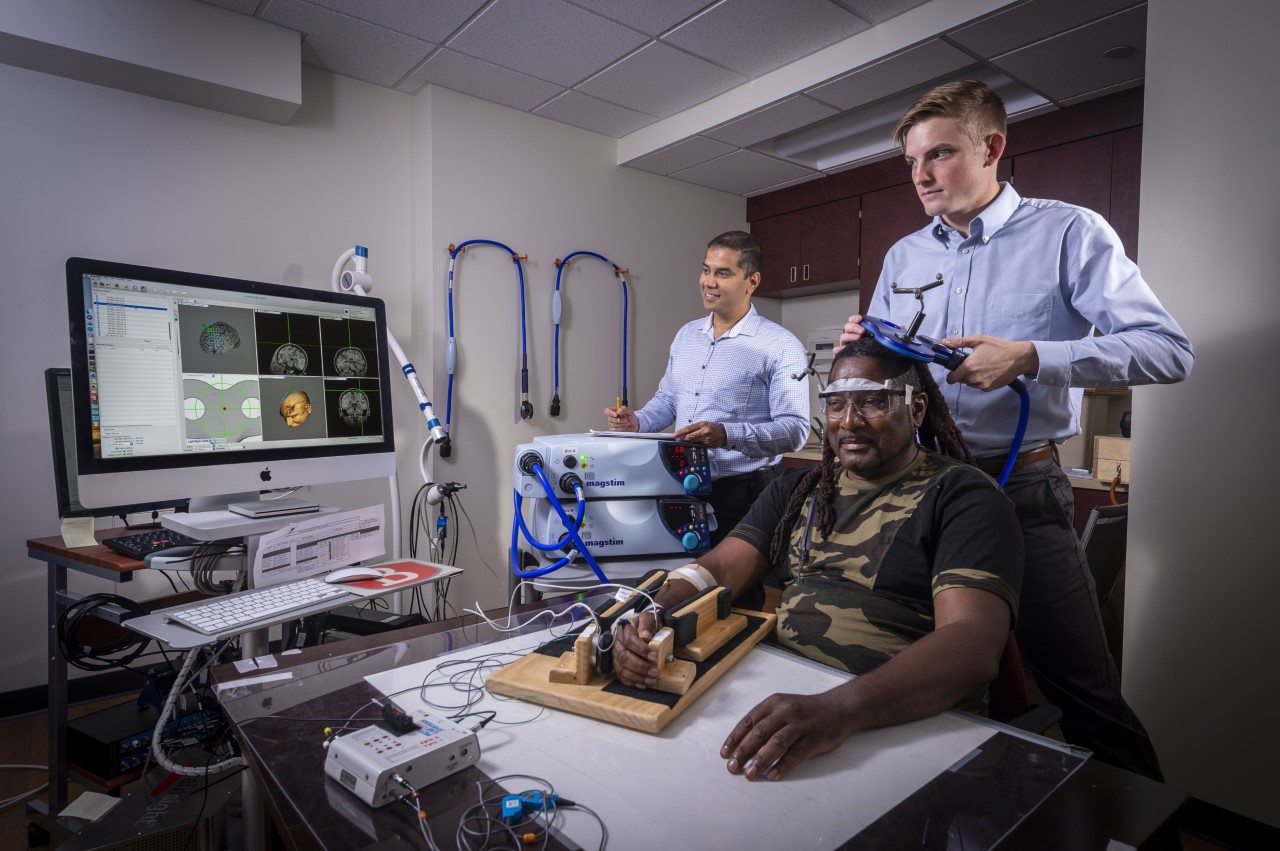
After a stroke, about 80% of patients experience significant disability such as loss of function of one arm. This can lead to reduced quality of life and loss of independence. While rehabilitation research has begun to test novel strategies to improve arm function after stroke, the progress in neurorehabilitation is significantly limited by our understanding of how the nervous system participates in the control, coordination, and learning of arm movements after stroke. The goal of the Neuroplasticity and Motor Behavior Laboratory (NMBL) is to help improve the quality of life of stroke survivors by optimizing motor recovery through a better understanding of the mechanisms involved in motor control and learning. Currently, there are multiple exciting projects investigating different features of motor function in the arm after stroke.
From applying toothpaste on our toothbrush in the morning to pulling our blanket at night, we constantly engage both arms to accomplish tasks efficiently. Despite the ubiquitous nature of bimanual actions, current rehabilitation focuses on remediation of unilateral deficits of the weaker hand. It is thus not surprising that most unilateral therapy approaches improve unilateral performance, but they fall short of improving patient activity levels or participation in daily life. Our first project, funded by the NIH, identifies abnormalities in coordination between the two arms during different classes of bimanual actions in individuals with stroke. We acquire objective kinematic (movement) and kinetic (force) data from individuals with and without stroke as they interact with instrumented objects. In particular, we are interested in determining the extent to which unimanual impairments influence bimanual coordination deficits after stroke. Our preliminary analyses, published in the Archives of Physical Medicine and Rehabilitation, suggest task-dependent coordination deficits in bimanual coordination after stroke. Actions where two hands accomplish common goals (e.g., picking up a box with both hands) engage hands in a more coordinated fashion than those where each hand is accomplishing independent goals (e.g., each hand picking up a separate box). Currently, we are working on detailed analyses of movement and force data to test our hypotheses and report our findings.
While bimanual coordination deficits are evident in individuals with stroke, we are far from determining the best possible ways to remediate them. Sophisticated behaviors like bimanual coordination are complex, and they rely on interaction between motor, cognitive, and perceptual systems; thus, it is important to determine how motor and perceptual task demands influence learning of bimanual movements. Using an innovative bimanual reaching task in a virtual environment, we manipulate perceptual and motor demands to optimize training parameters of bimanual learning. Increasingly, we are also recognizing that responses to treatment in neurorehabilitation show significant inter-individual variability. To determine which patients benefit the most from bimanual learning, we use state-of-the-art neuroimaging and neurostimulation techniques to identify how an individual’s brain lesion and neural connectivity contribute to bimanual coordination and learning. This important project, funded by our NIH-NICHD R01 grant, aims to provide fundamental understanding of brain-behavior relationship for bimanual coordination and bimanual learning after stroke, and it set the stage for future investigations aimed at the development of intervention protocols to improve bimanual coordination for more complete functional arm recovery.
Some of the NMBL’s ongoing research is in collaboration with other scientists at MRRI, such as Laurel Buxbaum, PsyD. These projects investigate the effects of hemispheric specialization on goal-directed real world actions through systematic investigation of motor behavior as well as related cognitive and neuroimaging markers in stroke survivors with left and right hemisphere damage.
Stroke causes significant functional limitations that can lead to poor quality of life, and research conducted by the scientists and research assistants within NMBL and MRRI is providing important new knowledge to advance neurorehabilitation for people with stroke.


36 comment on “Research Spotlight: The Neuroplasticity and Motor Behavior Laboratory”